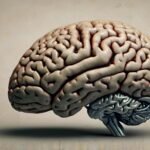
Adolescence is a crucial period of growth and development that bridges childhood and adulthood.
It’s a time of significant physical, emotional, social, and cognitive changes.
Understanding these stages can help parents, educators, and caregivers support adolescents as they navigate this complex period.
This guide will explore the three main stages of adolescent development: early adolescence, middle adolescence, and late adolescence.
Stage 1: Early Adolescence (10-13 Years Old)
Physical changes
During early adolescence, which marks the start of puberty, children undergo rapid physical changes.
This period is characterized by significant growth spurts.
For girls, physical changes include the development of breasts and the beginning of menstruation.
Boys experience growth in their testicles and penis, and their voices start to deepen.
These changes are part of the body’s transition from childhood to adulthood.
- Read also: Personality vs Character – 5 Key Differences Between These Two
- Read also: At What Age is Your Personality Fully Developed
Emotional changes
Emotionally, early adolescents often become more sensitive and experience frequent mood swings.
Hormonal changes contribute to these fluctuations.
They may feel self-conscious about their changing bodies and become increasingly concerned with their appearance.
This stage is also marked by a quest for identity, leading them to explore different behaviors and personal styles.
Social changes
Socially, early adolescents begin to seek more independence from their parents and start focusing more on their peers.
Friendships become much more significant, and they may form cliques or groups with similar interests.
The influence of their peers grows stronger, affecting their decisions and actions.
They start to value their friends’ opinions more and may prioritize peer relationships over family connections.
Cognitive development
In terms of cognitive development, early adolescents start shifting from concrete thinking to more abstract reasoning.
They begin to think about possibilities, hypothetical scenarios, and question established norms and rules.
This period is marked by a growing curiosity about the world and a desire to understand broader concepts beyond their immediate experiences.

Stage 2: Middle Adolescence (14-17 Years Old)
Physical changes
During middle adolescence, the physical changes that began in puberty continue and become more pronounced.
Boys typically experience increases in muscle mass and the growth of facial hair.
Girls’ bodies continue to mature, completing most of the physical changes associated with puberty.
Both boys and girls reach most of their adult height during this stage.
Emotional changes
Emotionally, middle adolescence can be a turbulent time.
Teens are in the process of forming their own identities, which can lead to struggles with self-esteem and self-image.
They may experience intense emotions and become more prone to conflicts with parents and other authority figures.
This period is marked by a heightened sensitivity to personal and social issues.
Social changes
Socially, middle adolescents place a high value on their relationships with peers.
Romantic relationships often begin during this stage, and peer pressure can become quite significant.
Teens might push boundaries and test limits as they seek more independence and autonomy.
Friendships and social groups become central to their lives, and they may experience a strong desire to fit in and be accepted by their peers.
Cognitive development
Cognitively, middle adolescents show improvements in problem-solving and reasoning skills.
They become more adept at critical thinking and can consider multiple viewpoints when making decisions.
This stage also marks the development of a stronger sense of personal ethics and values, as teens start to form their own beliefs about right and wrong.
Stage 3: Late Adolescence (18-21 Years Old)
Physical changes
By late adolescence, most people have reached their full physical maturity.
This means that any remaining growth in height typically stops, and their bodies are fully developed.
The physical changes of puberty are complete, and they now have adult-level physical characteristics.
Emotional changes
Emotionally, late adolescents tend to be more stable than they were in earlier stages.
They usually have a clearer sense of who they are and are better at managing their emotions.
However, this period can still be stressful as they navigate major life transitions, such as leaving home for college or starting their first job.
These changes can bring about a mix of excitement and anxiety as they adjust to new responsibilities and experiences.
Social changes
Socially, late adolescents focus on gaining independence and preparing for adult roles.
While relationships with peers remain important, they begin to seek deeper, more meaningful connections.
Many start to concentrate on long-term goals, such as choosing a career path or entering serious relationships.
This stage often involves making significant decisions about the future, including education and career choices.
Cognitive development
Cognitively, late adolescents have advanced reasoning and problem-solving skills.
They are capable of abstract and hypothetical thinking, allowing them to plan for the future and set long-term goals.
This stage is characterized by a well-developed sense of self and a clearer vision of future aspirations.
They start making critical decisions about their careers, education, and other important aspects of their adult lives.

Key Developmental Tasks
During adolescence, there are a few important goals that teens work towards as they grow up.
Here’s a closer look at these key tasks:
Gaining independence from parents and family
One of the big goals during teenage years is to start becoming more independent.
This means taking on more responsibility and making more of their own decisions.
Teens begin to want to make choices about their daily lives, such as what they wear and how they spend their time.
This helps them learn to rely on themselves and prepare for adult life.
Developing their own identity
Teens work on figuring out who they are and what they believe in.
They explore different aspects of their personality, interests, and values to see what feels right for them.
This process of self-discovery helps them understand what makes them unique and how they fit into the world.
Building and maintaining friendships
Friendships become very important during adolescence.
Teens focus on forming and keeping strong relationships with their peers.
These friendships offer support, companionship, and a sense of belonging.
Learning to handle conflicts and work well with others are important skills they develop during this time.
Planning for the future
As they get closer to adulthood, teens start to think about their future roles, such as their career and family life.
They explore different job options, consider their interests and skills, and make plans for their education or training.
They also begin to think about what kind of future they want and how to achieve their goals.
This planning helps them prepare for the responsibilities that come with being an adult.

Developmental Milestones
During adolescence, teens achieve several important milestones that mark their growth and development.
Here’s what these milestones look like:
Completing physical growth and sexual maturation
By the end of adolescence, most teens reach their full physical height and complete the changes associated with puberty.
For girls, this means their bodies finish developing in terms of breast growth and menstruation.
Boys complete the changes in muscle development and voice deepening.
This stage signifies that they have reached full physical maturity.
Developing a stable sense of identity
Teens work on figuring out who they are and what they stand for.
This involves understanding their own beliefs, values, and interests, and how they see themselves in the world.
By the end of adolescence, they usually develop a more stable and clear sense of identity, knowing what makes them unique and how they fit into their community.
Forming close and supportive friendships
Building strong, supportive friendships is a key milestone during adolescence.
Teens form deeper connections with their peers, which provide emotional support and companionship.
These friendships often become central to their social lives and help them navigate the ups and downs of growing up.
Making decisions about education and career paths
As they approach adulthood, teens begin to make important decisions about their future.
This includes choosing educational paths, such as selecting high school courses or college majors, and exploring career options.
They start to think about what kind of job they might want and how they can achieve their career goals.

- Read also: Navigating the Quirky World of Childish Behavior in Adults
- Read also: Navigating the Loop: Understanding Repetitive Behaviors in Adults
Conclusion
Adolescence is a dynamic and transformative period marked by significant growth in physical, emotional, social, and cognitive domains.
By understanding the stages of adolescent development, parents, educators, and caregivers can better support teens through these critical years, helping them navigate challenges and achieve their full potential.


